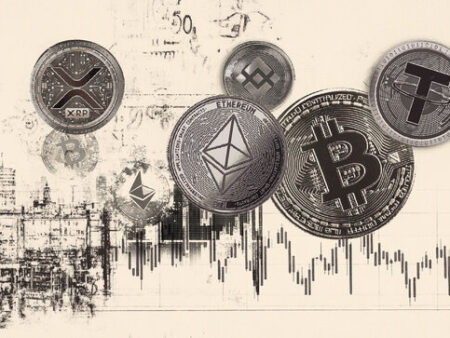Crypto’s Evolution: From Utopian Ideal to “Swamp Asset”
A recent editorial in The Economist, dated May 17, 2025, argues that virtual assets, initially conceived as a “liberation technology” with the utopian goal of empowering small investors, have transformed into the ultimate “swamp asset.” This means they are deeply entangled with political and financial interests that border on self-dealing.
Over the past six months, the crypto sector has become increasingly integrated with power in Washington. Former ministers and regulators have taken on key government positions, major market players have made multi-million dollar donations to campaigns, and even meme coins like $TRUMP have served as a privileged access route to the U.S. President.
However, outside the U.S., jurisdictions such as the European Union, Japan, and the United Arab Emirates are making progress with regulatory clarity, avoiding these conflicts of interest. The article also highlights that the most promising uses of the technology are emerging in the tokenized asset market. In 18 months, the volume of real-world assets—from private credit to Treasury bonds—transformed into tokens has tripled.
In the payments sector, giants like Mastercard and Stripe already allow instant settlements in stablecoins, with the potential to reduce costs. However, the sector risks “burning” this opportunity by resorting to aggressive lobbying and legal disputes that contradict regulatory decisions.
The Erosion of Decentralization
The editorial goes on to assess that the original ambition of decentralization has been eroded by the very power dynamics it sought to combat. Decentralized trading platforms, once celebrated for eliminating intermediaries, have become stages for large participants who hold enough liquidity to dictate prices and fees, undermining the true autonomy of the individual user.
At the same time, the fragmentation of validation chains and the proliferation of forks have created an ecosystem in which rivalries between technical communities often culminate in marketing competitions, rather than effective advances in security and scalability.
The Paradox of Stablecoins
The text also draws attention to the paradox of stablecoins as a “bridge to the future” of instant and low-cost payments. Although giants in the conventional financial sector already integrate these instruments into their settlement operations, the lack of a solid regulatory framework exposes depositors and creditors to systemic risks comparable to those of a niche commercial bank, without the capital and liquidity safeguards that a traditional bank is obliged to maintain.
Furthermore, the editorial suggests that the true transformative potential of blockchain technology lies in less flashy, but more robust applications: traceability of supply chains, administration of tokenized copyrights, and registration of intellectual property. In these niches, the technology has proven to reduce audit costs and increase transparency, without attracting the speculative turbulence typical of cryptocurrency markets.
The consolidation of these enterprise-grade use cases will depend, however, on international regulatory harmonization that establishes minimum standards of security, interoperability, and governance.
The Evolution of Bitcoin’s Concept
It must be admitted that the concept of decentralization created by Bitcoin is no longer the same, although the technology itself remains untouched. What was outlined as a truly autonomous and intermediary-free system has evolved into an ecosystem in which large liquidity holders, institutional funds, and political influences articulate validation rates, governance parameters, and even protocol development roadmaps.
This disconnect between the original ethos and the current configuration does not, however, nullify the innate cryptographic qualities of the blockchain—immutability of records, cryptographic auditability, and near-instantaneous settlement of transactions—which can, under a sophisticated regulatory framework, lead the sector back to its promise of systemic efficiency and financial inclusion.
Lessons for Brazil
In the face of this international regulatory landscape, marked by successes and failures, it is up to Brazil to extract lessons that shape its own framework, aligned with its economic and institutional specificities. In this sense, the construction of an effective national regulatory framework must start from an accurate diagnosis of international successes and failures, transforming them into catalysts for local innovation.
The European MiCA demonstrates that it is possible to combine rigorous minimum capital requirements and detailed on-chain governance rules without stifling market dynamism. Its prudential standards—which include periodic resilience tests and independent audit reports—serve as a compass to mitigate systemic risks without barring the development of new applications.
The U.S. case warns of the dangers of regulation captured by political influences. The collapse of the bipartisan stablecoin regulation project showed how the normative vacuum accelerates the formation of politically wealthy “swamp assets,” eroding investor confidence.
The experience of the United Arab Emirates shows that well-structured sandboxes, articulated between the monetary authority and the securities agency, can offer a controlled testing environment—from real estate tokenization to cross-border payments in stablecoin—without compromising the integrity of the financial system.
In Switzerland, leadership in blockchain is sustained by a clear and collaborative legal framework. FINMA provides precise guidance on token classification, while the DLT Law creates a legally secure environment for experimentation. Organizations such as the Crypto Valley Association and the Swiss Blockchain Federation promote on-chain governance initiatives and define compliance standards that balance supervision and innovation.
Conclusion: A Unique Opportunity for Brazil
In line with the diagnosis made by The Economist editorial, which described crypto assets as “the ultimate swamp asset,” the result of political capture and aggressive lobbying, we conclude that Brazil is in a unique position to extract the best from international models and shape a virtual asset regulation that balances systemic security, market dynamism, and innovation.
Drawing inspiration from MiCA, with its minimum capital requirements, on-chain governance, and independent audits, reducing risks without stifling innovation; avoiding the normative vacuum and political capture of the U.S., betting on clear and technically sound legislative processes; implementing sandboxes like those of the United Arab Emirates to test tokenization and payments with security; and adopting a Swiss-style legal framework, with objective guidelines from FINMA and a robust DLT law, in order to create in Brazil its own regulatory environment that leverages efficiency, transparency, and financial inclusion.
Stay ahead of the curve in the fast-paced crypto world – explore the latest updates and trends at Cryptonewsfeeds.com.










